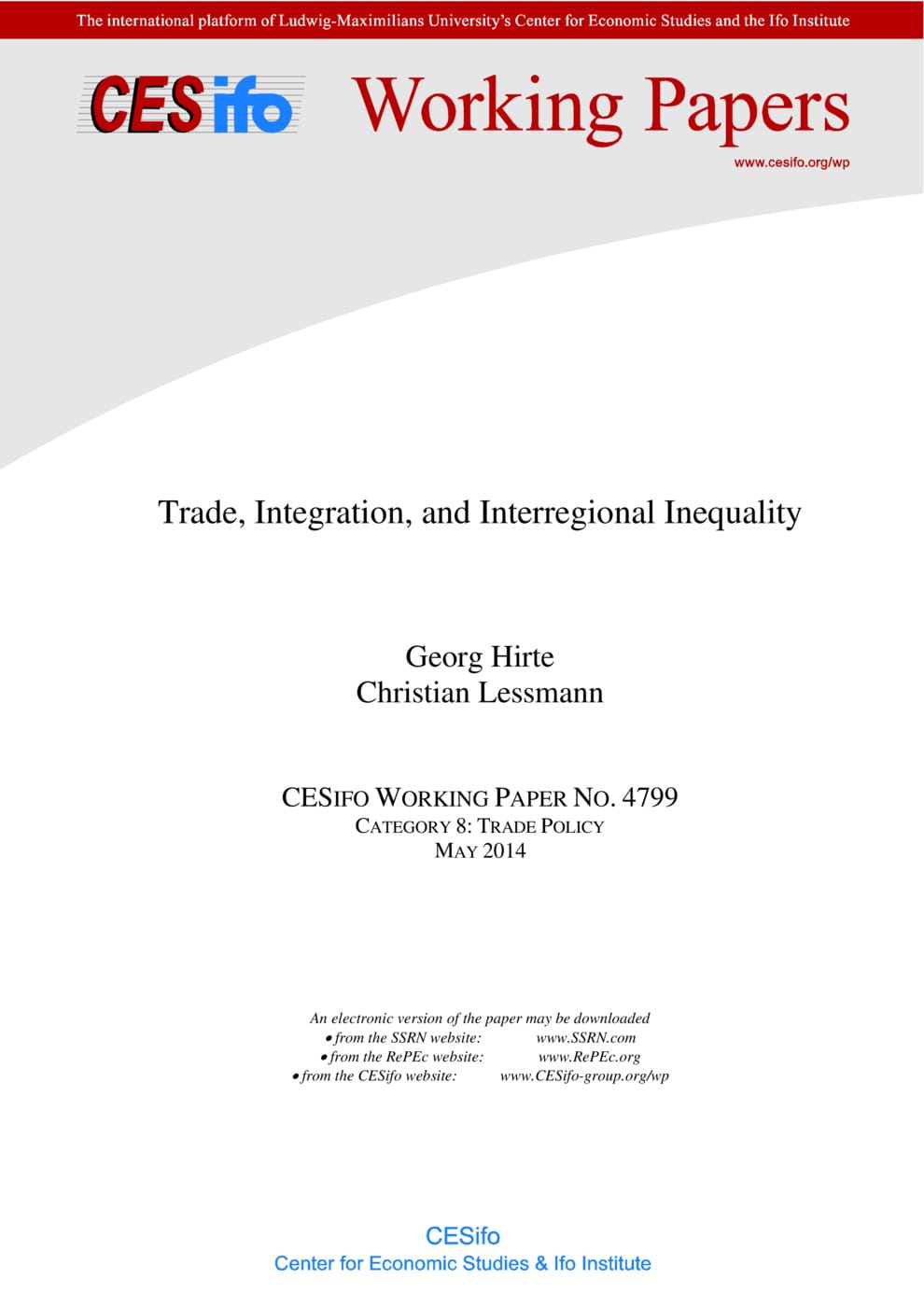Trade, Integration, and Interregional Inequality
CESifo, Munich, 2014
CESifo Working Paper No. 4799

We study the effect of international trade and freeness of trade (openness) on interregional inequality within countries. We estimate a model derived from a structural economic-geography approach in which interregional inequality depends on weighted trade shares and trade costs. In addition to the standard trade-to-GDP ratio, we derive and propose an aggregate freeness-of-trade measure based on phiness of trade. Both measures are instrumented by proxies constructed from estimates of a gravity model of bilateral trade, which covers 208 countries for the period 1948-2006. For our study we use Gennaioli et al.’s (2013) cross-country data set, which covers 110 countries (1569 sub-national regions) for the year 2005, and the panel data set of Lessmann (2014), which covers 56 countries (835 sub-national regions) for the period 1980-2009. The IV and dynamic panel regressions provide evidence that trade increases interregional inequality, but that the coefficient of the freeness-of-trade variable is ambiguous. Because the latter is an indicator for integration in the world markets, we conclude that more integration may neutralize the negative interregional distribution effects of trade.
Trade Policy
Fiscal Policy, Macroeconomics and Growth